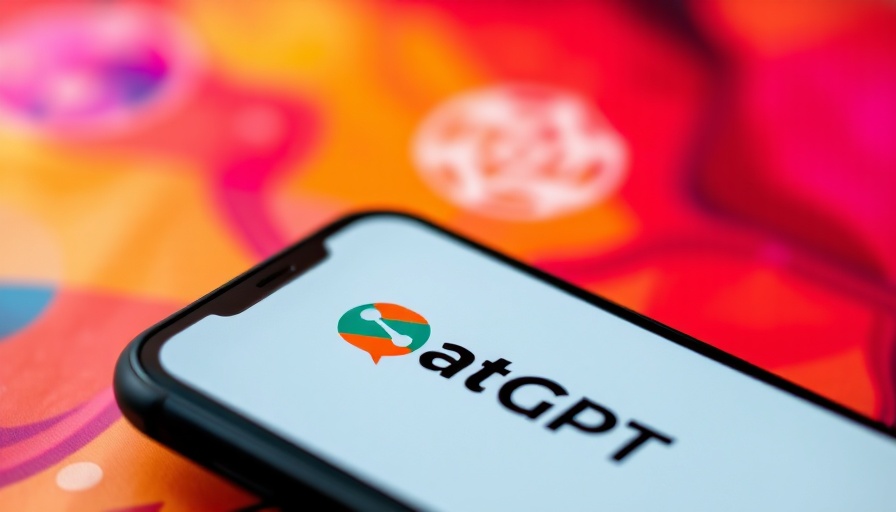
OpenAI’s New O1-Pro API: A Game-Changer in AI Development
OpenAI has introduced its latest application programming interface (API) — the $150 per million input tokens and $600 per million output tokens O1-Pro. This offering marks a significant jump in pricing compared to its predecessors, making it the company's priciest API to date. But what does this new layer of cost mean for developers, and is the value it provides justifiable?
What Sets O1-Pro Apart?
To comprehend the implications of the O1-Pro API's pricing, we first need to explore what’s included in this enhanced model. The O1-Pro boasts advanced features, including a context window of 200,000 tokens, reflecting how much information the model can process at once. This enables developers to create applications that require deeper contextual understanding and nuance in AI responses.
While the previous models like O1 and O3 offered significantly lower pricing — $1.10 and $4.40 per million tokens, respectively — the O1-Pro's higher costs come with promises of "consistently better answers" due to its reliance on more computational power. This power underpins capabilities such as structured outputs, vision support, function calling, and batch processing, opening new avenues for application development.
Real-World Implications: Is it Worth the Investment?
The meteoric rise in cost may raise concerns about the accessibility for smaller developers and startups looking to implement AI solutions. Many current users can see the chain of thought through the older models without incurring such high charges. With the O1-Pro, however, developers might experience a significant strain on their budgets, particularly if they are not operating at scale.
For instance, several developers have expressed their frustration over elevated costs without a clear visualization of the model’s reasoning process, which has been a major drawback in existing iterations. While the O1-Pro claims enhanced reasoning capabilities, it's imperative for developers to evaluate if the added expenses correlate with the improved functional outputs they seek.
What’s Behind OpenAI’s Pricing Strategy?
As OpenAI continues to fine-tune its API offerings, it's interesting to note how the company’s pricing framework is actively influenced by user demands and computational costs. In a world where AI technology is on a swift evolution path, OpenAI's pricing is emblematic of its efforts to balance competitiveness and value.
The O1-Pro's rate can discourage some potential users but could also encourage innovation as developers strive to utilize the capabilities offered to generate unique applications that justify high costs. As the API landscape continues to evolve, understanding the motivations behind pricing strategies will be vital for informing the investments companies make in AI technologies.
The Comparative Landscape of AI APIs
A stark comparison emerges when looking at the O1-Pro against existing models like the O1-mini. At $1.10 per million input tokens, it's almost a fraction of what O1-Pro demands. This begs the question — for startups and smaller tech firms, are older models still viable for their application needs, or is O1-Pro the path forward?
Notably, conversation around AI pricing inevitably leads to considerations of its long-term benefits versus immediate costs. Many developers often weigh speed and output quality against their budget limitations, making the decision to invest in high-cost APIs a challenging, yet critical business strategy.
Future Predictions: The Path Ahead for OpenAI
Looking ahead, the trajectory of OpenAI's innovations suggests more nuances in API offers. Increasingly, specialized APIs may emerge to cater to specific industries and focus areas, possibly leading to sub-categories that clarify applicable pricing structures. As AI technology advances, its influence on sectors such as healthcare, finance, and user engagement will be immense.
Furthermore, the O1-Pro’s capabilities hint at future trends where AI’s power will surpass merely responding to text inputs, evolving into fields that demand more complex understanding, visuals, and ultimately, human-like interactions. Innovation may also lead to better competitive pricing models as new players enter the space.
Conclusion: What Developers Should Consider
As smaller firms weigh their options for adopting OpenAI's O1-Pro API, key discussions should center on balancing potential enhancements with financial feasibility. The shift to a higher-cost model creates a responsibility for thoughtful and strategic integration opportunities. Stakeholders must remain vigilant, not only evaluating the immediate costs but also understanding the broader implications of investing in cutting-edge AI technologies.
For developers seeking to tap into the capabilities of OpenAI's O1-Pro API, it's crucial to consider the unique value it provides for your specific needs. Now is the time to evaluate your AI strategy and experience firsthand the evolution of AI technologies.
 Add Row
Add Row  Add
Add 




 Add Row
Add Row  Add
Add 

Write A Comment